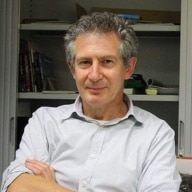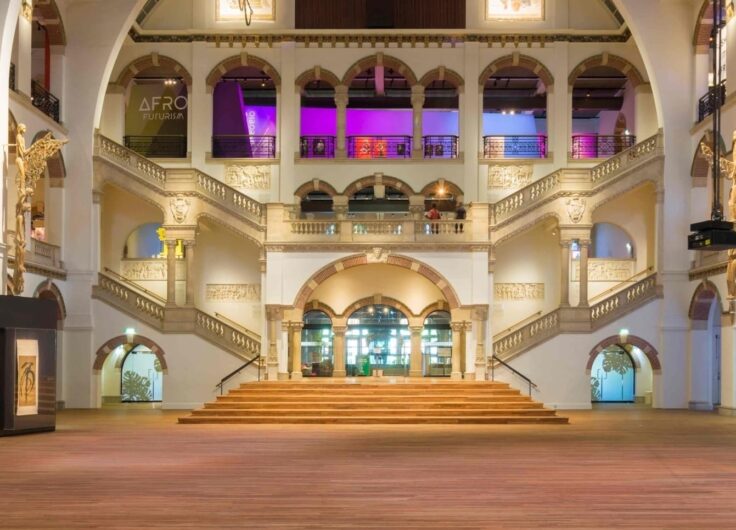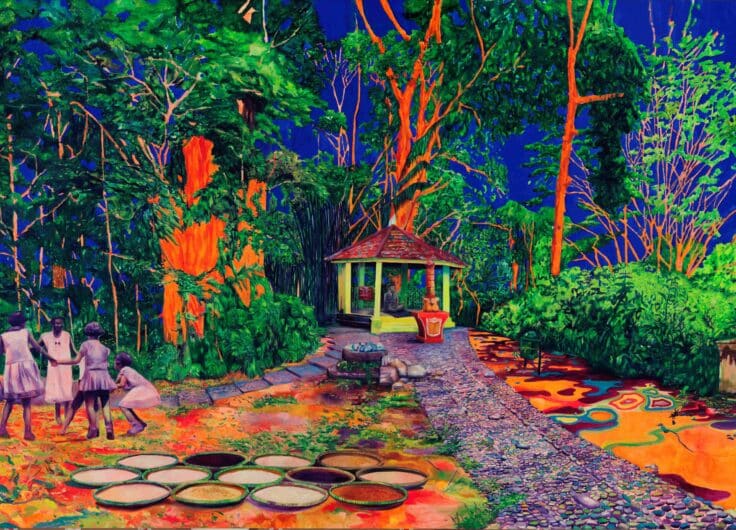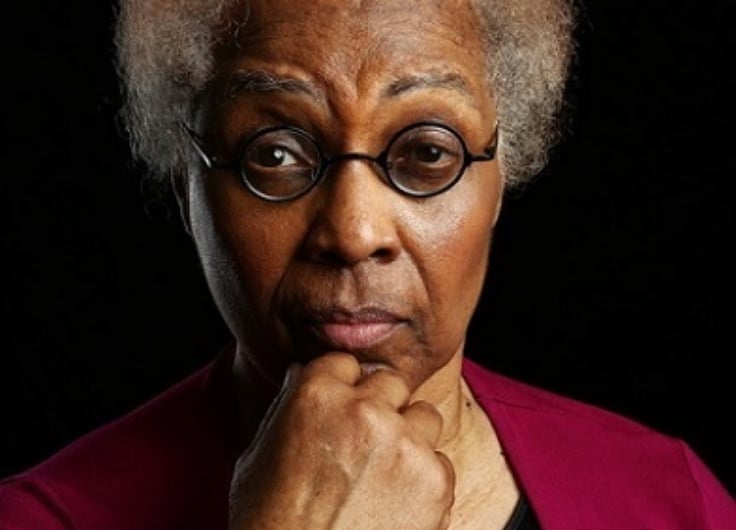On a visit to the Flemish city of Sint-Niklaas, Derek Blyth discovers the largest market square in Belgium, the biggest cigar in the world and the greatest atlas ever printed.
No matter who I asked about Sint-Niklaas, I got the same answer. ‘It has the largest square in Belgium,’ they all said. And that is about all anyone knows. And so the first thing I did when I stepped off the train in Sint-Niklaas was to look for its enormous square.
It is big. But maybe too big. At least on the day, I saw it, the 3.2-hectares Grote Markt (Main Square) was a vast empty space. Which was not surprising. The square was given to the city in 1248 by the Count of Flanders, but on one condition. It had to remain an open space. Nothing could be built on it. Ever.
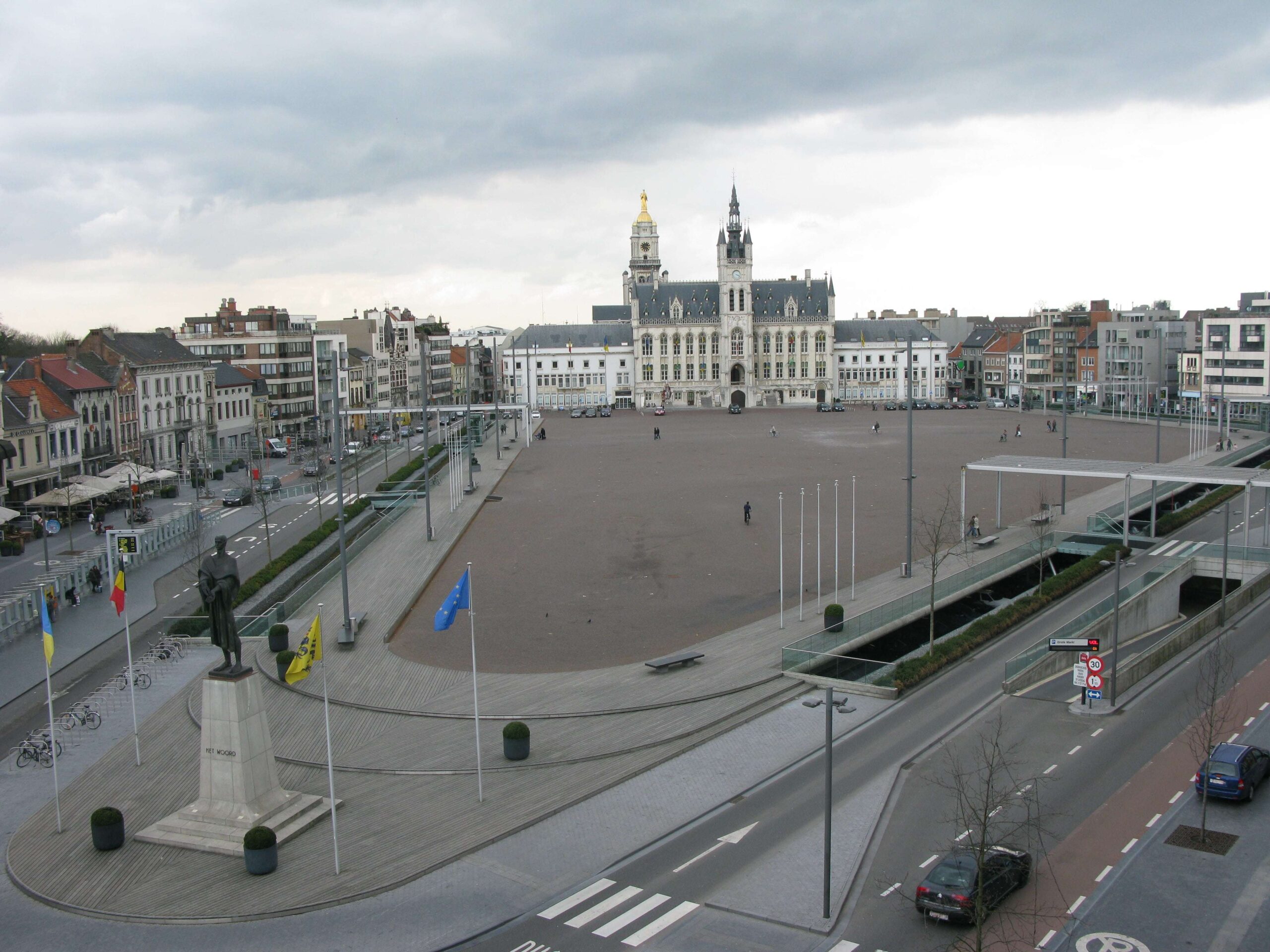 Measuring 3.2 hectares, the Main Square of Sint-Niklaas is Belgium's largest market square.
Measuring 3.2 hectares, the Main Square of Sint-Niklaas is Belgium's largest market square.© Sint-Niklaas
More than seven centuries later, Sint-Niklaas has a problem. Because of climate change, the paved square can get uncomfortably hot during summer heat waves. The city recently drew up a radical plan that is illustrated on signs dotted around the vast open space. It involves planting trees and adding a large pool. Even if that means defying a law that has been enforced for more than seven centuries.
The best time to see the square is on market day, I was told. Every Thursday, the square fills up with dozens of stalls selling local vegetables, cheap clothes and street food. The market has been drawing people from the surrounding Waasland region since it was founded in 1513.
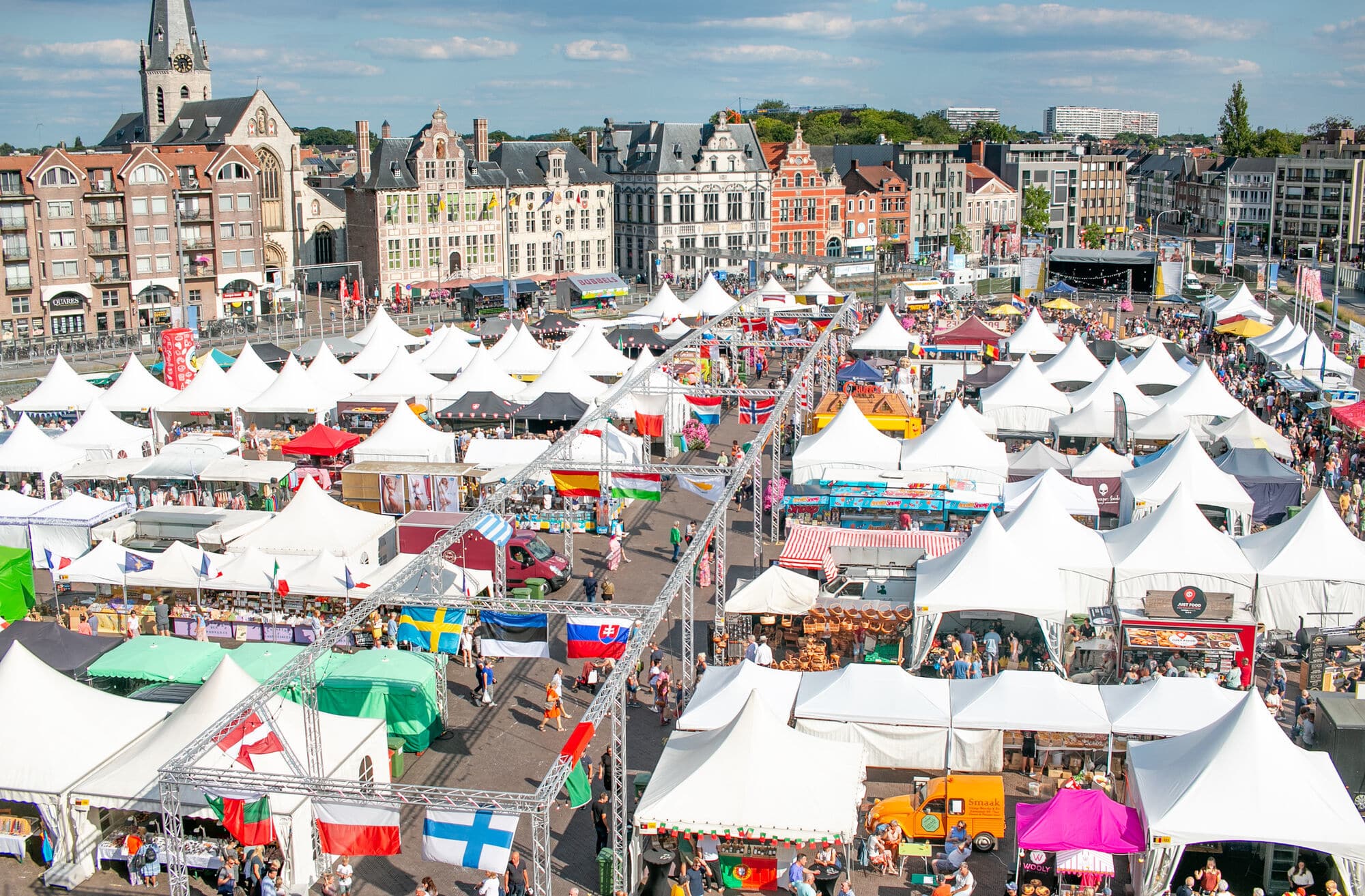 The Euromarkt on the Main Square of Sint-Niklaas
The Euromarkt on the Main Square of Sint-Niklaas© Sint-Niklaas
I couldn’t get there on a Thursday, but it was easy to appreciate the size of the weekly market by viewing the live webcam installed in the town hall’s tower. Most days, the camera shows an empty square, but on Thursday mornings the entire open space is packed with stalls and vans selling food, fish, vegetables and fabrics.
But there is perhaps an even better time to click on that webcam. Every year, on the first weekend of September, the city celebrates its ‘Vredefeesten’
(Peace Festival). And if the wind is right, and the rain is not too heavy, you can watch dozens of hot air balloons take off from the square.
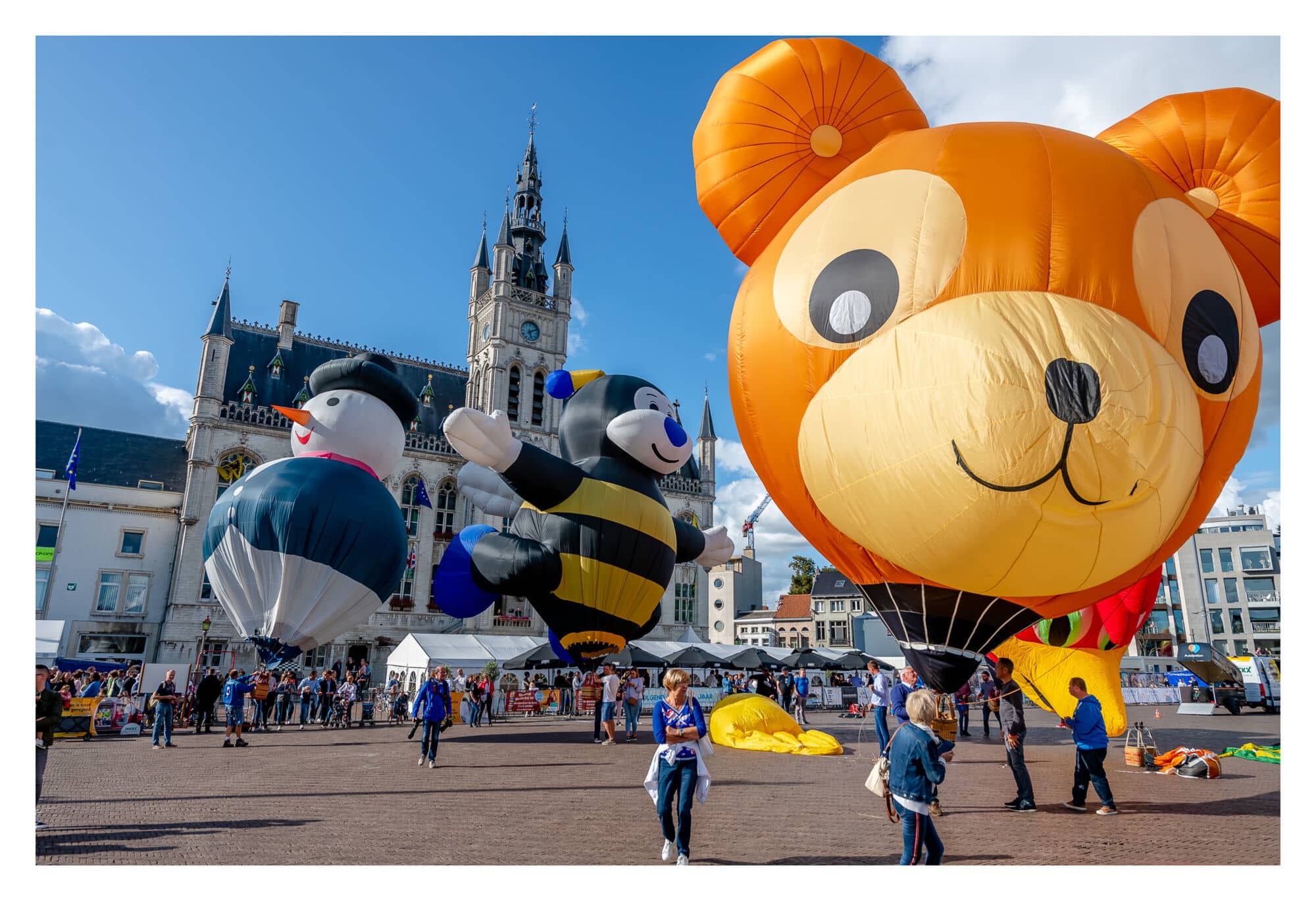 Dozens of hot air balloons take off from the Main Square every year during the Vredefeesten.
Dozens of hot air balloons take off from the Main Square every year during the Vredefeesten.© Sint-Niklaas
As I stood on the square, I noticed a sign pointing to the Pipe and Tobacco Museum. I had read on its website that the museum displays the largest cigar in the world, along with the second-largest pipe in the Benelux. This I have to see, I thought, until I dropped into the tourist office for more information. ‘Alas,’ I was told by the friendly woman at the desk, ‘The museum is only open on the first and third Sunday of the month.’
The tourist office is worth a visit since it moved in 2022 into a striking new building next to the town hall. Designed by the architects Robbrecht en Daem, it is a bright, welcoming building that accommodates the city administration, archives and tourist office. The architects have created a rather eccentric experience by suspending a series of archive rooms above the tourist office like floating boxes.
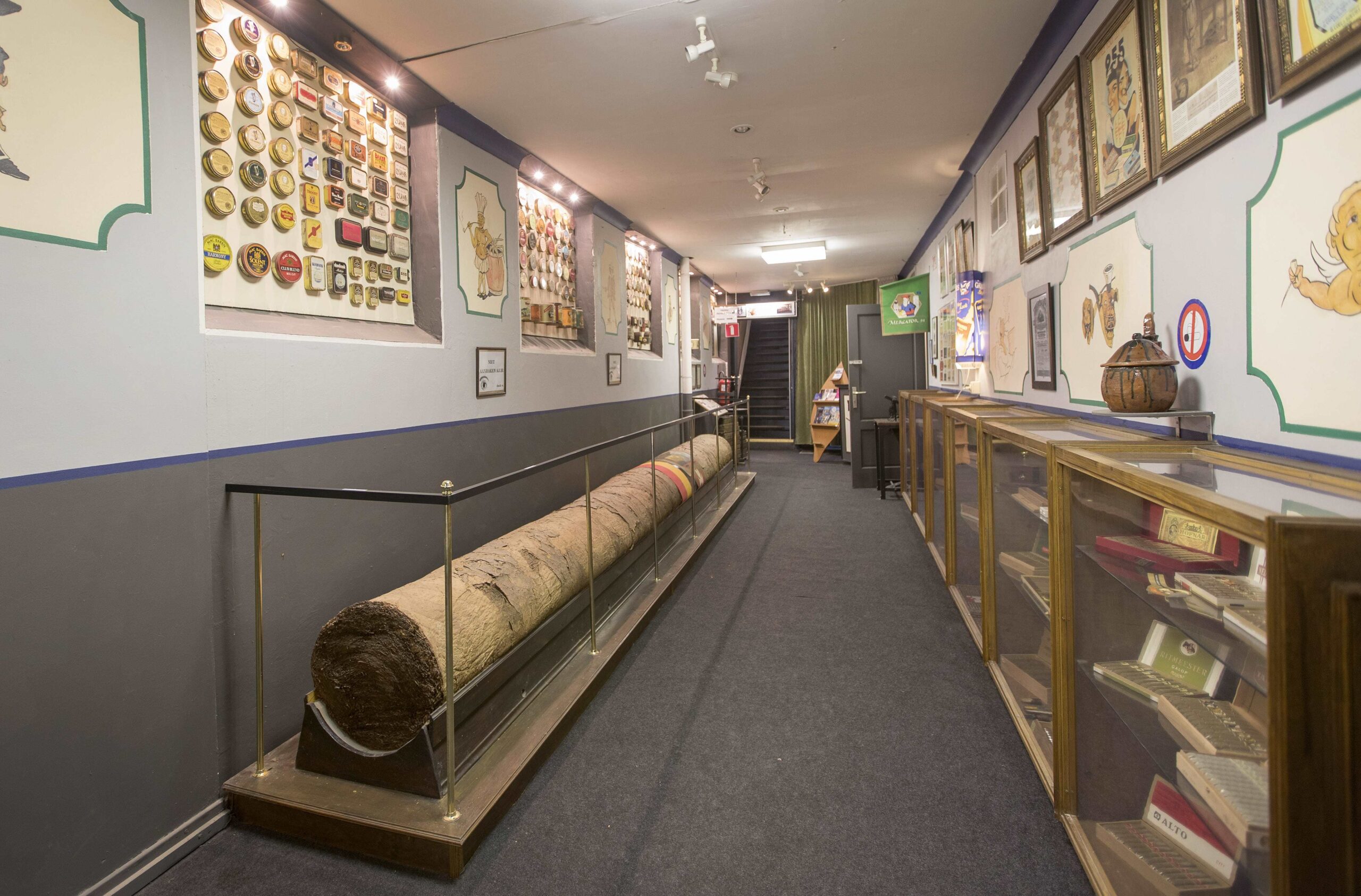 The Pipe and Tobacco Museum shows off what they say is the largest cigar in the world.
The Pipe and Tobacco Museum shows off what they say is the largest cigar in the world.© Sint-Niklaas
After admiring the bold design, I picked up a heap of information leaflets on Sint-Niklaas. More than enough ideas to fill a day. The Mercator museum was a must. The City Museum next door was also interesting. Then there was street art, Art Deco architecture and local cycle trips.
Let’s start with Mercator, I thought. The museum sits in a quiet park with a bust of the geographer shaded by old trees. It turned out to be a fascinating museum with darkened rooms filled with historic maps, antique globes and scientific equipment. The collection goes all the way back to the world maps of Ptolemy and the baffling mediaeval maps that somehow guided pilgrims across Europe. But the main focus is on the Flemish cartographer Gerard Mercator, who shaped the modern view of the world.
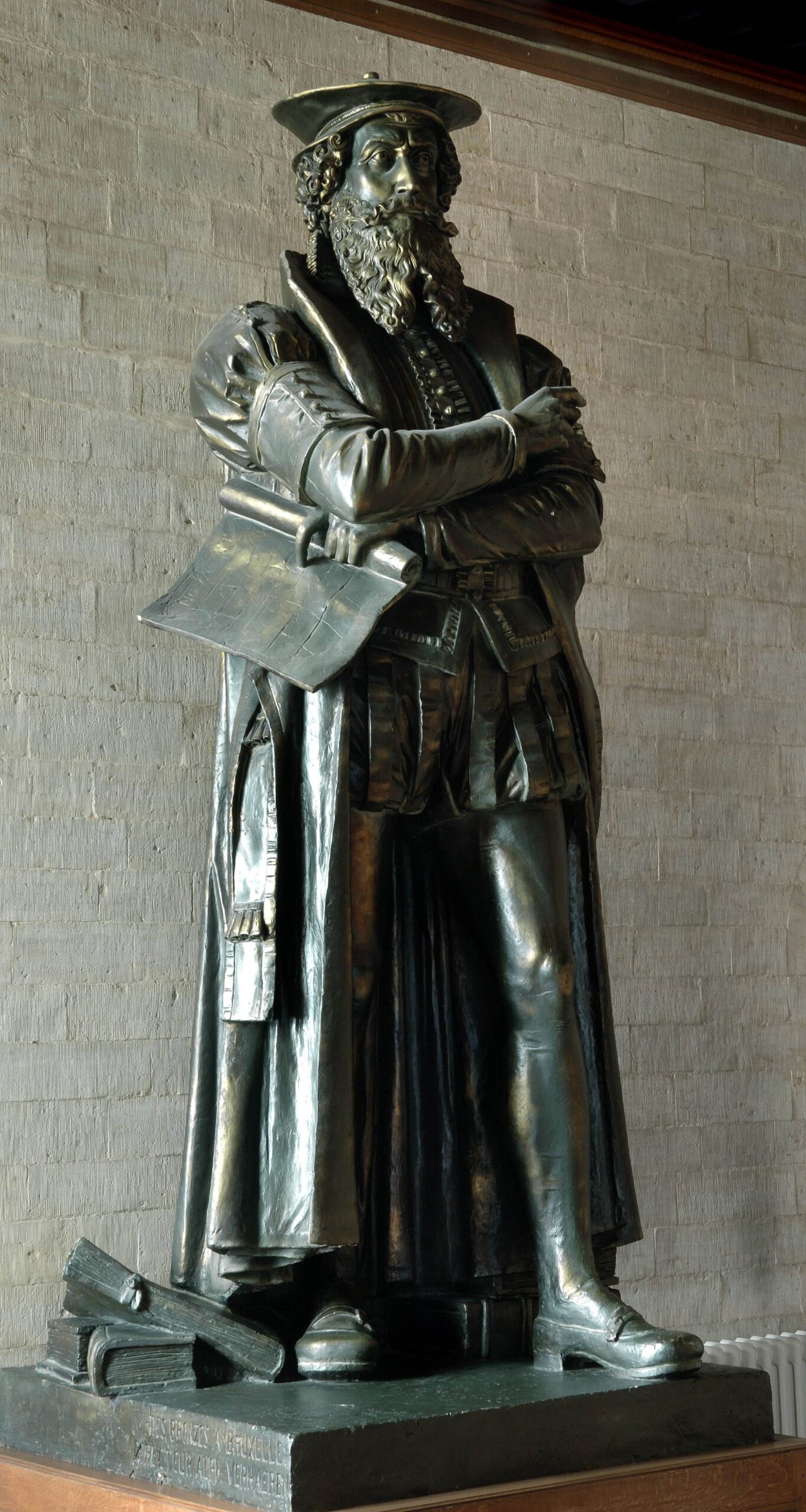 Gerard Mercator (1512-1594), geographer, cosmographer and cartographer
Gerard Mercator (1512-1594), geographer, cosmographer and cartographer© Sint-Niklaas
Born Gerard de Cremer in the small river port of Rupelmonde, near Antwerp, he adopted the more scholarly Latin name Mercator. A skilled engraver and mathematician, he designed beautiful globes and created his first world map at the age of 25.
His career was brutally interrupted when he was charged with heresy and imprisoned briefly in Rupelmonde castle. Shaken by the experience, he fled the Low Countries to settle in the more tolerant Duisburg, where he spent the rest of his life. It was here he created his great world map.
Mercator’s aim was to aid maritime navigation along the world’s trade routes by converting the globe into a flat map. The Mercator projection, as it was called, has been used for more than 400 years to create navigation charts, school atlases and even Google maps.
But there is a problem with Mercator’s map. The cartographer placed Germany at the centre of the world, exaggerated the size of Europe and North America, and shrunk Africa and South America. Some critics now argue that it reinforces European colonial attitudes.
 This world map on two sheets is an early work of Mercator. It is also the first map to apply the name America to the North American continent as well as to South America and to differentiate North and South America as separate continents.
This world map on two sheets is an early work of Mercator. It is also the first map to apply the name America to the North American continent as well as to South America and to differentiate North and South America as separate continents.© Wikipedia
The museum screens several videos that present Mercator’s life and his achievements. I watched all of them. But I still didn’t know why the Mercator Museum was in Sint-Niklaas, since it seems he never set foot in the city.
I learned later that the collection was established in 1861 by the Royal Historical Circle of Waasland. This organisation covers the region around Sint-Niklaas, which includes Mercator’s hometown, Rupelmonde. The museum began as a modest collection in a single room, but it was expanded in 1994 to mark the 400th anniversary of Mercator’s death.
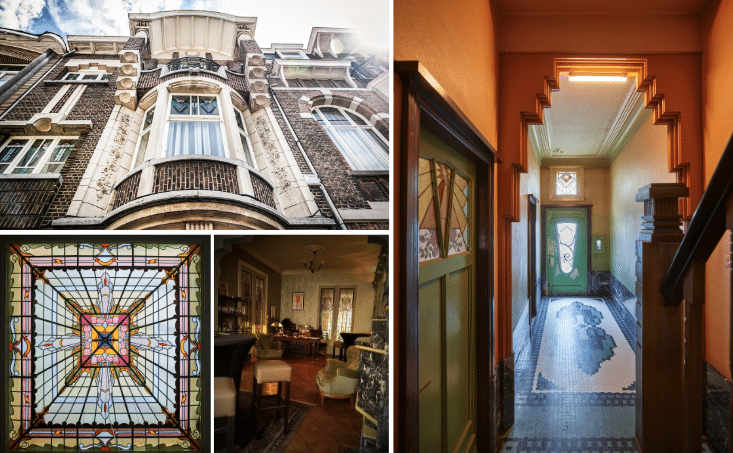 The Elisabeth Quarter has a large number of buildings designed in the jazzy Art deco style of the 1920s.
The Elisabeth Quarter has a large number of buildings designed in the jazzy Art deco style of the 1920s.© Sint-Niklaas
I left the museum with a plan. I had read that Sint-Niklaas had a large number of buildings designed in the jazzy Art deco style of the 1920s. Many of them in the Elisabeth Quarter, a neat neighbourhood of terraced houses near the railway station. The houses decorated with streamlined balconies, porthole windows and other modern touches that give them the look of a vintage wireless or a luxury liner.
The Flemish writer Tom Lanoye grew up in this rather well-off quarter and wrote about it in his early fiction. He described himself as ‘Een slagerszoon met een brilletje’ – a butcher’s son in specs. The city has put up signs in some of Lanoye’s old haunts with quotes from Sprakeloos (Speechless), a novel inspired by his youth in Sint-Niklaas.
You can pick up Lanoye’s novels in the bookshop ’t Oneindige Verhaal or maybe even come across the writer at a signing session. He writes fondly of this traditional literary bookshop with two floors of fiction, philosophy and art books. Most of the books are in Dutch, of course, but the shop has expanded its English section to include cult novels that young Flemish readers are desperate to buy.
The band Hooverphonic
also has its roots in Sint-Niklaas. Two of the three founding members grew up in the city. Established in 1995, Hooverphonic won international fame when their tracks featured in movies such as I Know What You Did Last Summer and Stealing Beauty. They also provided the theme song for the 2000 European Football Championship and represented Belgium (unsuccessfully) at Eurovision 2021.
As I wandered around the city, I began to understand that Sint-Niklaas is different from other Flemish towns. It doesn’t have all that many Gothic or Baroque buildings. The town hall on the main square may look Gothic, but it was only put up in 1876. For the most part, Sint-Niklaas seems rather modern for a town founded in 1217.
I eventually found out why. A fire swept through a gin distillery in 1690. By the time it was put out, most of the ancient city was burnt to the ground. The upside is that the city has a rich architecture legacy from the 18th and 19th century.
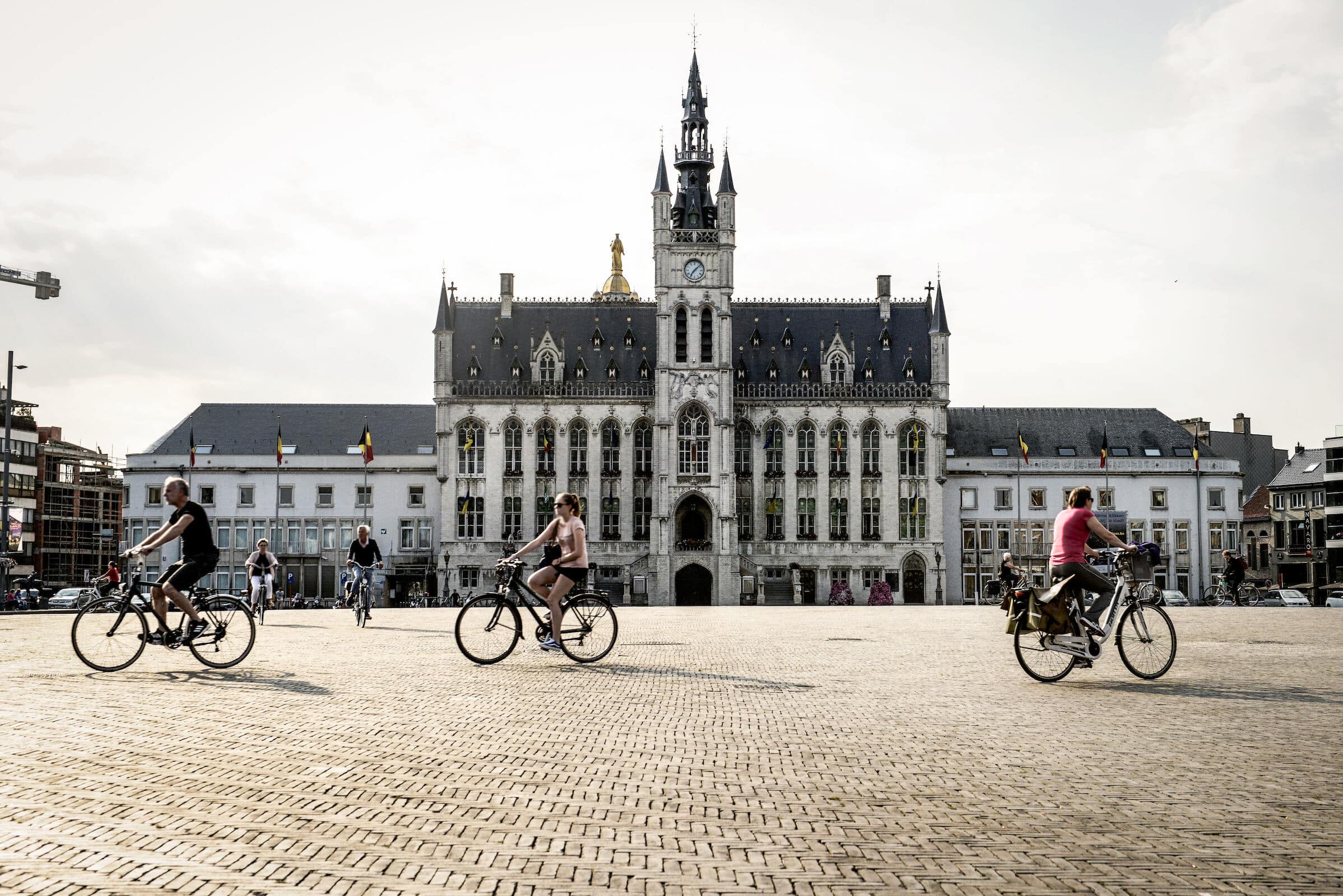 Sint-Niklaas has a rich architecture legacy from the 18th and 19th century, such as the town hall, built in 1876.
Sint-Niklaas has a rich architecture legacy from the 18th and 19th century, such as the town hall, built in 1876.© Sint-Niklaas
And of course it has its Art Deco buildings. Not just houses. I came across several old shop interiors that have survived intact from the 1920s. The old pharmacy De Walvis in Ankerstraat looks like it has hardly changed since it opened in the summer of 1919. The distinctive red-fronted shop closed in 2007 but everything has been preserved intact, including the window displays and the rows of green drawers inside the shop. You can even see ancient adverts slowly peeling off the walls.
Across the street, an old butcher’s shop still has the former owner’s name ‘Frans Metdepenningen’ on the window. This shop also closed a long time ago, but its authentic interior is well-preserved. It was used recently to shoot a scene in the film version of Jeroen Olyslaegers’s World War Two novel WIL. Peering inside, I could see it wouldn’t have taken much work to recreate the interior of a butcher’s shop during the German Occupation.
But there are inspiring new shops as well. The concept store Perron 47 (at Stationsstraat 47) is somewhere to hunt for stylish glassware, gadgets and modern art. And there’s Perron 87 in the same street (at number 87) where the focus is mainly on clothes and accessories for men.
Also interesting, the fashion store Pêche sells women’s clothes and accessories in a beautiful historical house near the Grote Markt. It’s worth taking a look at the stunning interior designed by Sophie Peelman with its mix of white furnishings, antique mirrors and soft fabrics.
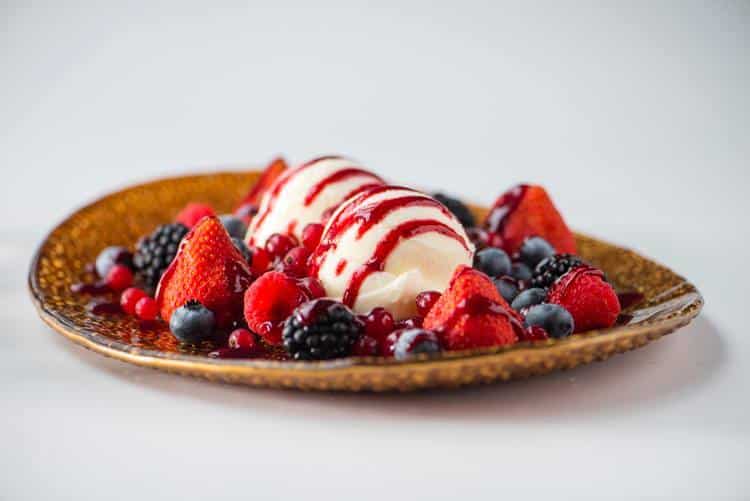 If you like ice cream, be sure to visit Cremerie François.
If you like ice cream, be sure to visit Cremerie François.© Facebook Cremerie François
One local business founded in the 1920s is still doing a roaring trade. The Cremerie François has been serving ice cream sundaes since it opened in 1928. They make their own creamy version from following a secret recipe that uses local milk. Their salon is a bright, modern spot decorated with neon lights and vintage photographs taken in the streets of Sint-Niklaas in the 1920s.
Across the street, Nick Wauters has been selling handmade Belgian chocolates since 2006. He makes his unique creations in a workshop that dates back to the 1980s using ingredients like marzipan, egg liqueur and cream. You can book a visit to the workshop to find out how he mixes flavours and creates unusual designs.
The city has recently been working on a plan to revitalise its downtown shopping quarter. Already, the Stationsstraat has been given a makeover to reduce traffic, add greenery and string lights from the trees. A private organisation has added to the urban mood by installing about 40 contemporary sculptures along the main streets. And the city has also launched a street art trail that takes in more than 30 works dotted around the city.
They include three monumental works by the Ghent street artist ROA. Famed for his animal murals painted on walls across the world, the anonymous artist created an early work in Sint-Niklaas next to the public library and another in a hidden square near the Grote Markt. His latest work, completed in 2022, has transformed the ugly back wall of a sport centre near the station. The huge work features four sleeping animals that rest on concrete elements of the building.
I had one more question before I left Sint-Niklaas. How come the city is named after Saint Nicholas, who came from Myra, somewhere in Turkey, and served as Bishop of Bari, in Italy. Like Mercator, the saint never set foot in Sint-Niklaas.
The answer lies inside the treasury of the 13th-century Sint-Niklaaskerk (St. Nicholas Church). An elaborate silver bust of the saint is carved with the words Reliquiae S. Nicolai, relics of Saint Nicholas.
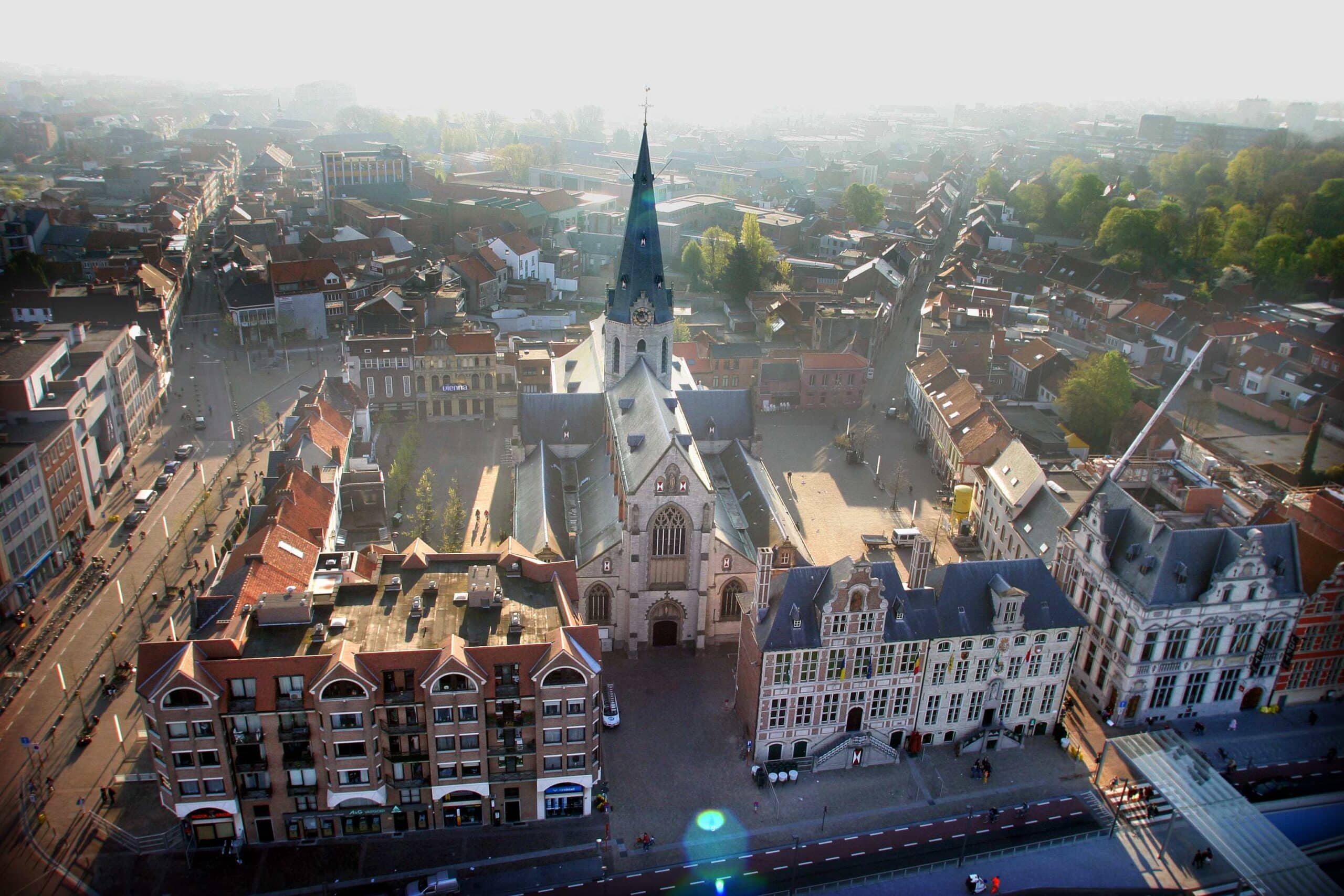 Aerial view of the St. Nicholas Church
Aerial view of the St. Nicholas Church© Sint-Niklaas
Saint Nicholas is, as most people know, the patron saint of children, as well as sailors, brewers and merchants. In Flanders, he is called Sinterklaas, or De Sint, the bishop who arrives by boat from Spain with presents for all the good children.
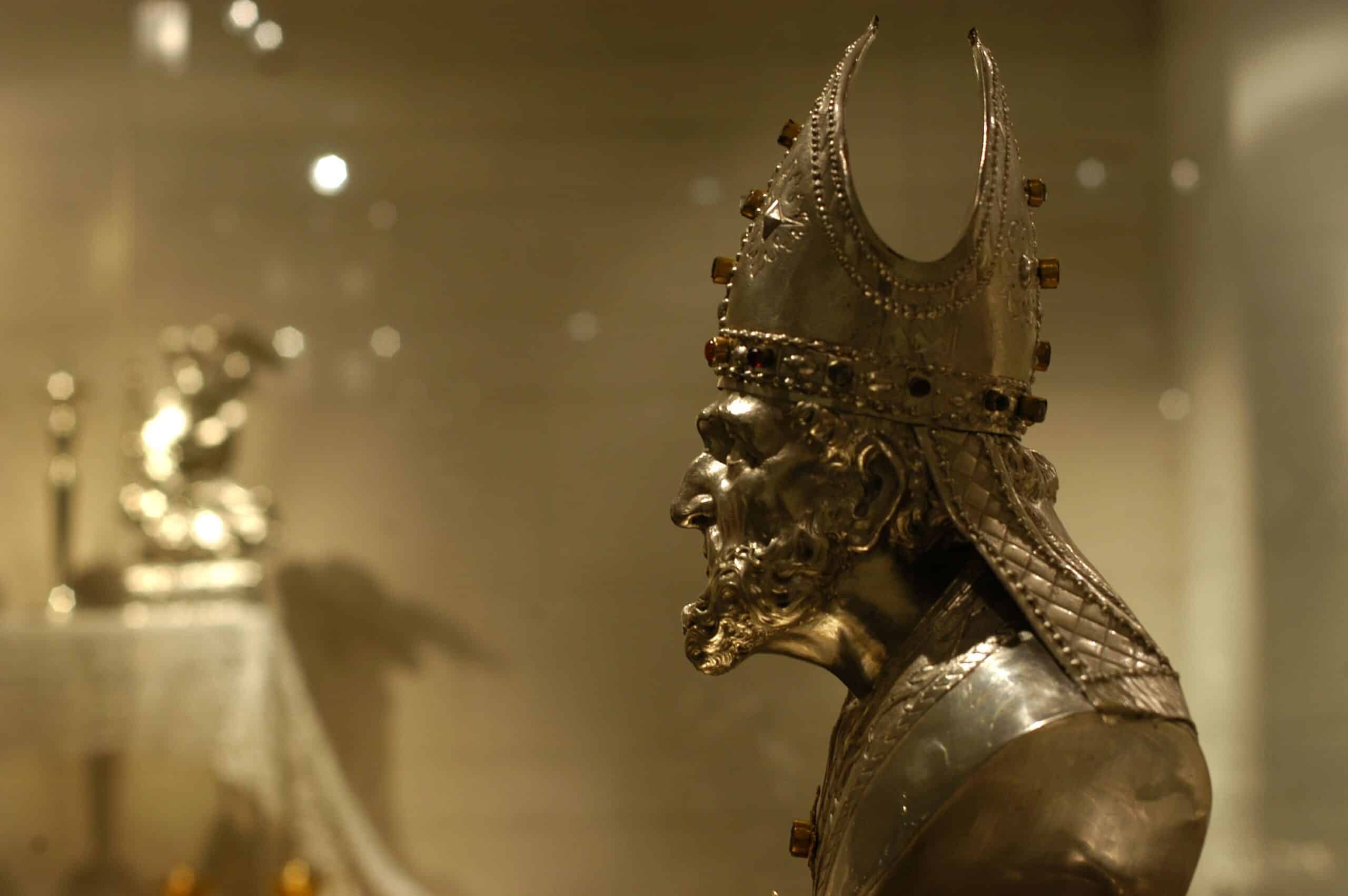 An elaborate silver bust of St. Nicholas inside the St. Nicholas Church.
An elaborate silver bust of St. Nicholas inside the St. Nicholas Church.© Sint-Niklaas
The city of Sint-Niklaas has celebrated its connection by placing a modern statue of the saint outside the town hall. Every year, De Salons – a monumental house once owned by a textile baron – is transformed into Het Huis van De Sint
(The Home of St. Nicholas). Children can look around De Sint’s bedroom, living room, kitchen and bathroom.
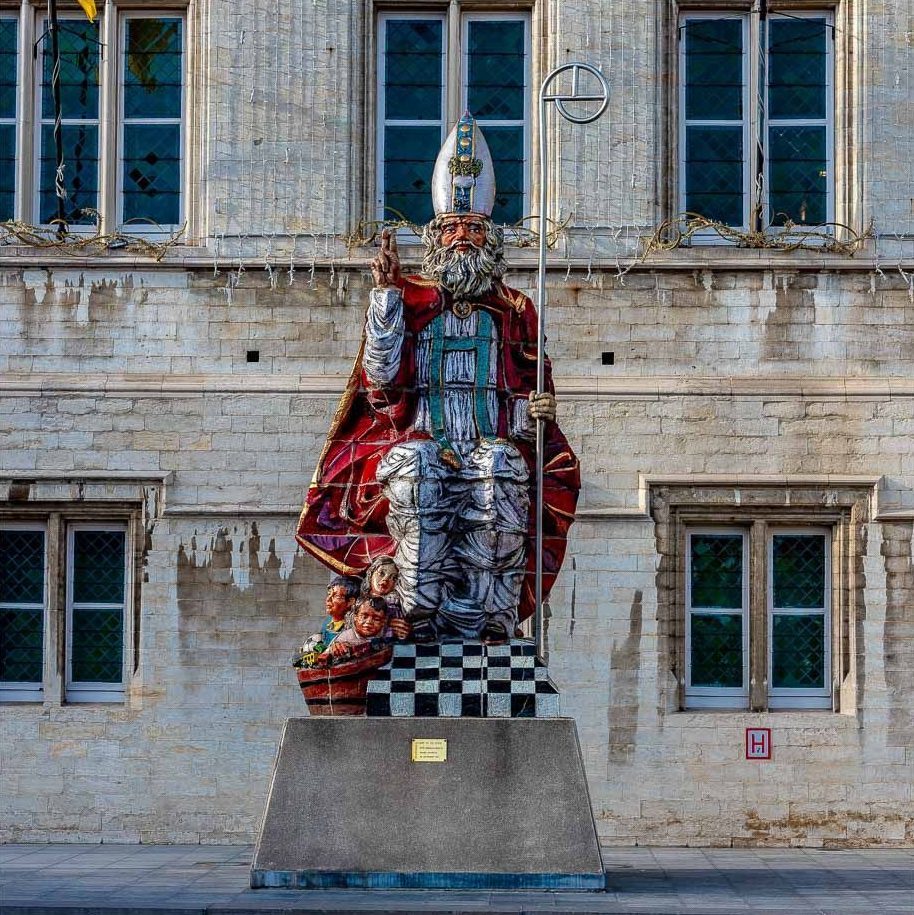 Statue of St. Nicholas outside the town hall
Statue of St. Nicholas outside the town hall© Sint-Niklaas
At the same time, local bakers offer a special Sinterklaas speculaas biscuit with an image of Sinterklaas printed on it. When you look closely, you see that the saint is shown arriving in a hot air balloon.
I ended the day in the city museum SteM Zwijgershoek, which partly occupies a former textile factory. The museum organises temporary exhibitions on themes like virtual reality and astronomy. But it also has a series of obscure and deserted rooms filled with an intriguing collection of objects from the museum’s storerooms.
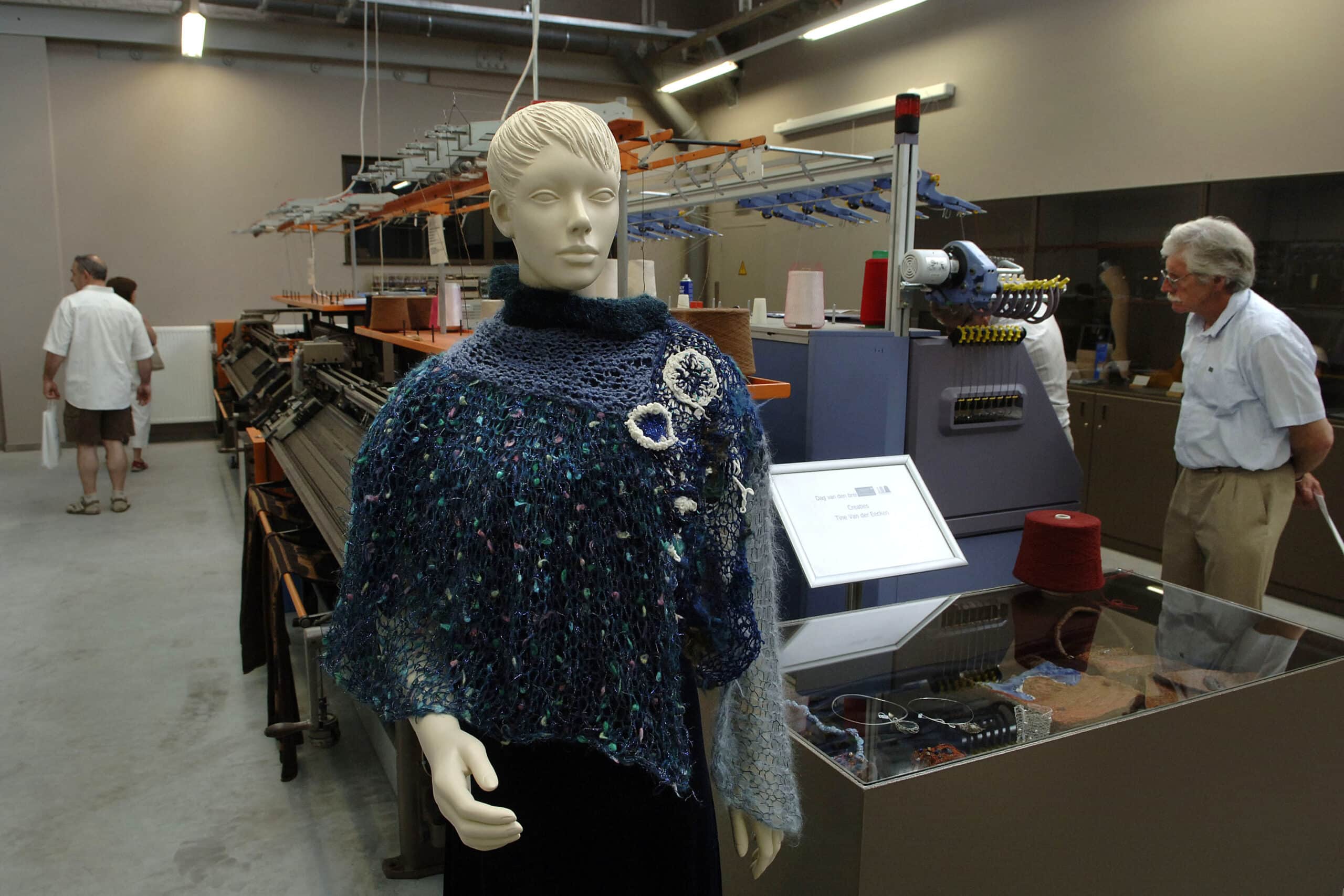 The city museum is housed in a former textile factory.
The city museum is housed in a former textile factory.© Sint-Niklaas
The curators have put together an enchanting display of miscellaneous objects that have been gathering dust over the decades. I particularly enjoyed an extensive collection of antique hairdressing equipment, including some strange and rather sinister electrical devices from the 1920s that were used to give the local ladies a Hollywood-style permanent wave.
The hairdressing collection also includes a creepy display of hairdressing models’ heads, a collection of vintage advertising posters and a row of streamlined hair dryers. Some old adverts dedicated to female beauty add to the period charm of the collection. ‘Pour engraisser et avoir buste parfait et formes opulentes, prenez la Helba’, claimed one poster. ‘Take Helba to put on weight and obtain a perfect bust and shapely curves,’ is the message that women were once told.
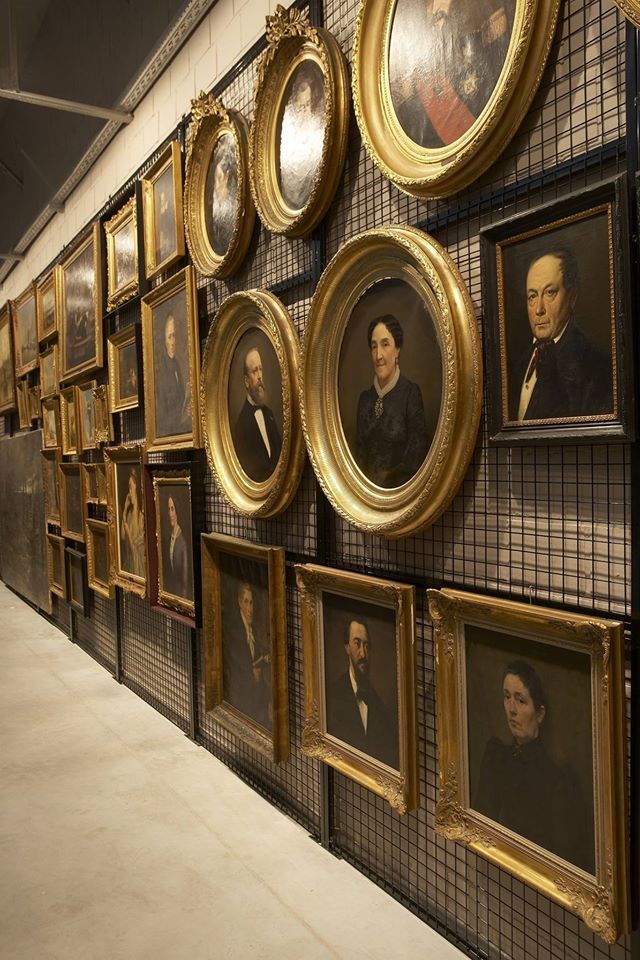 Anonymous portraits face visitors in the city museum.
Anonymous portraits face visitors in the city museum.© Sint-Niklaas
It gets even more strange in a side room where you can look at endless racks of antique curiosities and climb up onto a platform to get up close to a collection of paintings. Nothing is labelled, so it is impossible to know the identity of those men with their magnificent moustaches and the women with their formes opulentes.
I still had one final surprise to come. A door leads into a huge factory floor with rows of old knitting machines. Most of them still functioning. You learn here about the textile industry that once boomed in Sint-Niklaas in the years after the First World War. But the industry went through difficult times in the 1970s. And finally it was gone, leaving just this room of silent looms.
This strange museum somehow seemed the right place to end a visit to Sint-Niklaas. Like the city it reflects, the museum is an uncertain place, not fully formed, but rich and interesting.
Maybe Tom Lanoye is the best person to sum up the city where he grew up. Groots van markt, hart en gehakt, he called it, in a 2019 poem about the city. ‘Big market, big heart and big helping of mince, you might say.
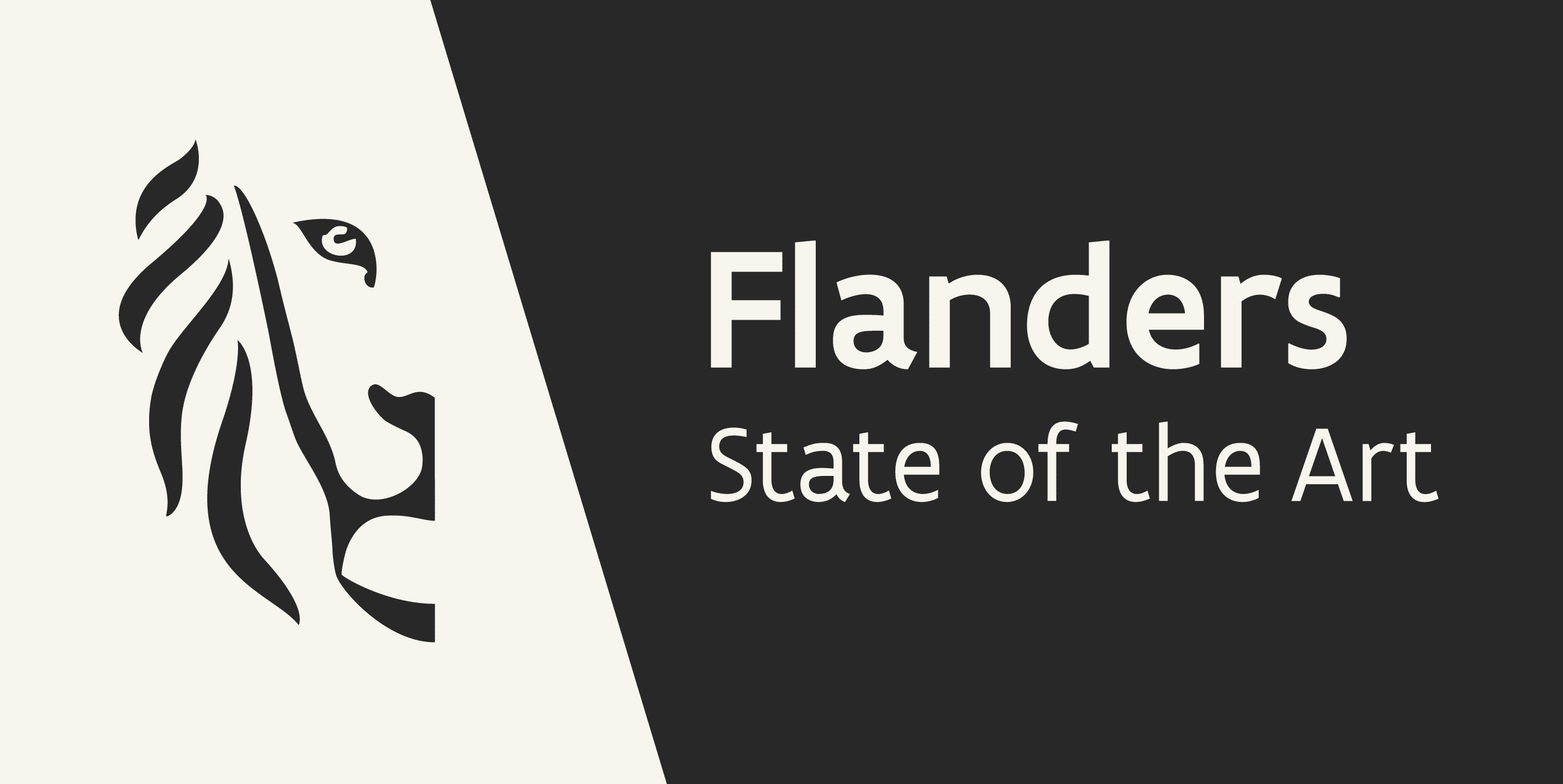
This article was realised with the support of the Flemish Government.

